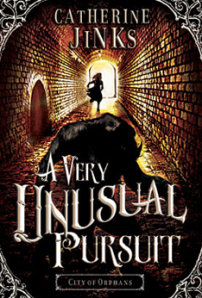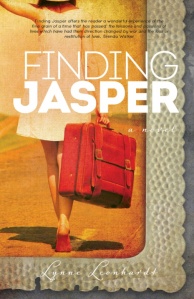 Years ago, on the first festival panel I ever took part in, there was a question from the audience that I had heard many times before and have often heard since: Why don’t writers write about happy things, happy relationships? That first time, another panel member, the prodigiously talented Sonya Hartnett, replied: Because happiness is beige. This is not true in life, of course, but I could see Hartnett’s point when it comes to fiction. When we write narrative, we place our characters under pressure in order to explore who they are, to see what they’ll do. In fact, the narrative arc of fiction is sometimes described as: Something happens. Then things get worse.
Years ago, on the first festival panel I ever took part in, there was a question from the audience that I had heard many times before and have often heard since: Why don’t writers write about happy things, happy relationships? That first time, another panel member, the prodigiously talented Sonya Hartnett, replied: Because happiness is beige. This is not true in life, of course, but I could see Hartnett’s point when it comes to fiction. When we write narrative, we place our characters under pressure in order to explore who they are, to see what they’ll do. In fact, the narrative arc of fiction is sometimes described as: Something happens. Then things get worse.
That is not to say that fiction must deal solely in sadness, nor that happy couples are unknown in novels. When The Guardian posed the question Can happy marriage ever be interesting in books? earlier this year, readers were quick to offer examples (including a favourite of mine, Carol Shields’s Unless). But, on balance, these are less common, because when things get worse, things often get sad, too. And relationships may be the cause or the casualty of that sadness.
I thought of this when reading Personal Effects, the debut novel of Carmel Macdonald Grahame, because at the heart of this beautiful work of fiction is that rare thing: a very long, very happy marriage.
I have looked at Ross countless times and been struck by the depths of our separateness. I am not you is a thought that still has the power to enchant, easily becomes a desire to say, Come here, you. He has been the great force for tenderness, generosity, consideration and kindness in my life … The result, as it turns out, is this mutual symbiosis that never ceases to astonish me and yet is so perfectly ordinary. We have become These Two, You Two, Those Two. Ross’n’Lilith. Lilith’n’Ross. You and I. Us. We.
Personal Effects is not an extravagantly happy novel, however. There is joy in abundance, but grief, too, as the novel’s narrator, Lilith, meditates on the pushes and pulls, the ordinary and extraordinary, in the life of an individual, a relationship, a family.
Lilith, a ceramic artist and former teacher, and Ross, a geologist, are middle-aged empty-nesters whose two adult daughters are making their own way in the world. And now they’re faced with the prospect of, once again, relocating overseas because of the exigencies of Ross’s work in the resources industry. This latest international move is a return—to Calgary, Canada, where they lived many years before.
The narrative progression of the novel is non-linear and almost tidal in the way it moves in slow swells and glancing ripples, gathering in meaning and depth. Things happen, but the circuitous structure means that crucial events from the past, events that have shaped Lilith, are withheld, to be woven into the story when she finds the words to relate them. This sense of holding back is not merely narrative, either; Lilith knows that survival sometimes depends on things being hidden:
You live in an intimate regime with a man you love and your two daughters, but not even they need to know everything there is to know about you. Not everything can be told.
There is artistry here, in the melding of substance and form.
The quote above hints at ambivalences that the neat term ‘happy marriage’ cannot accommodate. Moving overseas for Ross’s work means the sacrifice of Lilith’s teaching career. Suddenly she is ‘a fully fledged dependent’. In an impressive scene showing a gender divide between two people bound together by love, history and respect, Lilith says:
I have no money in my purse and no prospect of putting any there. You have money in your wallet all the time. Money in this day and age is what keeps body and soul together, and now I have to ask you for it. I have to ask.
The final italicised ask comes as a cry, a humiliation, a protest at frayings in the fabric of a relationship between equals. Such cries can destroy or save, and this one brings for Lilith the realisation that ‘I have to find other, unexpected ways of being independent.’

The Pinnacles
One of the pleasures of the novel comes from its descriptions of place—Lilith’s childhood home of Cervantes (a small coastal town of Western Australia about 200 kilometres north of Perth, famous for its proximity to the unique limestone formations known as The Pinnacles), Rottnest Island (a holiday island off Perth with a dark history) and wintry Calgary—and the association of place with notions of home and belonging as Lilith contemplates yet another relocation overseas. As she observes, memories cannot be uncoupled from place:
… everything that happens, happens somewhere, a self-evident fact that strikes me as significant and overlooked. Memories insist on staging themselves, so events, moments, periods of a life come back with their mise en scène.
An image that is introduced early in the novel (page 8) is of the mosaic:
 Pique assiette mosaics, for example, are a mode of recomposition. Like fabric applied to a quilt, pieces of a grandmother’s broken cup, say, can be arranged and rearranged, each bringing its particular accidental shape to the whole and determining form. You take damage and convert it into something that will differently endure. You take what is old and preserve it. You revel in disparity as much as harmony. You transform, reconfigure, complete … You take the past and send it, refashioned into the future.
Pique assiette mosaics, for example, are a mode of recomposition. Like fabric applied to a quilt, pieces of a grandmother’s broken cup, say, can be arranged and rearranged, each bringing its particular accidental shape to the whole and determining form. You take damage and convert it into something that will differently endure. You take what is old and preserve it. You revel in disparity as much as harmony. You transform, reconfigure, complete … You take the past and send it, refashioned into the future.
This evocative passage serves as metaphor for the non-linear structure already discussed, and feels apt coming from Lilith the ceramicist. But the full weight, the richness, of the image is not realised until near the end—and I won’t spoil the impact of that discovery by saying any more here.
Personal Effects is a novel to savour, to rest face-down on the arm of your chair for a pause to allow reflection on what you’ve just read, to hug because it has articulated something true and special and perfect.
Carmel Macdonald Grahame was once my writing tutor, and many years ago she and I belonged to a small writing group for a time, and in both these capacities she taught me infinitely valuable lessons about writing. In Personal Effects, she has continued the lesson.
Personal Effects, by Carmel Macdonald Grahame (UWA Publishing, 2014)
ISBN 978 1 74258 534 5
You can read an excellent review by Lisa Hill here and Annabel Smith’s Q&A with Carmel Macdonald Grahame here.
 This is my third review for the 2014 Australian Women Writers Challenge.
This is my third review for the 2014 Australian Women Writers Challenge.
















